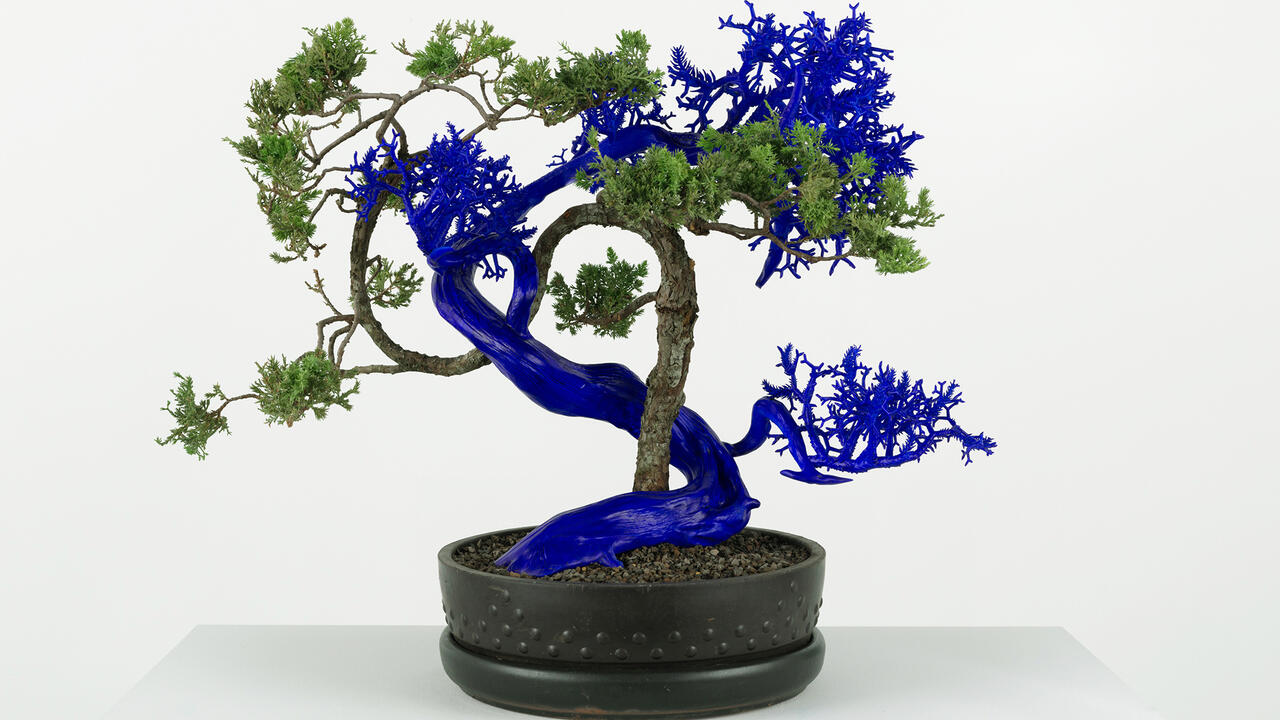Narrative, Bodies and Noise: Barbara T. Smith's Photographs and Photocopies
The artist's early works amalgamate nature and technology at Andrew Kreps Gallery, New York
The artist's early works amalgamate nature and technology at Andrew Kreps Gallery, New York

In her seminal essay, ‘Grids’ (1979), Rosalind Krauss writes of a ‘will to silence’ particular to the grid as it appears in art from De Stijl to conceptualism. Grids, she insists, display a ‘hostility to literature, to narrative, to discourse’. I was reminded of these words upon entering a show of early work by the California-based artist Barbara T. Smith at Andrew Kreps, where tidy, gridded groupings of photographs and photocopy works line the gallery walls. The grid weaves throughout the works themselves, too: Memo Pad (1965), a sculpture made from stacks of photocopies, sports a lattice across its surface; the computer-generated snowflake patterns of Outside Chance (1975) align to an underlying gridded logic of zeros and ones; and in documentation of a 1974 performance titled Scan 1, the performers sit in five polite rows of eight. Their behaviour, though, is anything but, and throughout the show a closer look finds Smith inviting into the grid exactly what Krauss saw excluded: narrative, bodies, noise – in other words, life.

This tension between the diagrammatic and the personal resonates with works by artists like Mary Kelly and Martha Rosler, or even the serial, diaristic photography of Bernadette Mayer, though the earliest works on display here slightly predate them. Between 1965 and 1967, working with a rented, corporate-style Xerox 914 placed in her dining room, Smith brought this new technology to bear on the material closest at hand in her role, at the time, as a California housewife: her children, belongings and body. In one untitled work from 1965–66, a portrait of her daughter serves as the input for a suite of twelve photocopies, across which a blank circle incrementally eclipses and reveals the child’s gazing face. Another layers an enlarged eye over a woman’s naked body, above which floats the word ‘birth’ — an apt reminder that Smith is harnessing one reproductive technology to address another, the warm, robotic sweep of the Xerox machine giving ghostly life to life.
In other Xerox works, Smith placed her own body directly on the bed of the machine. Just Plain Facts (1965–66), for example, captures her face somewhere between smiling and grimacing against the glass; little icons of a house, a watch face and a kitten dance tauntingly around her visage. Take a moment to consider her alone in this dining room, body leveraged above machine and skin pressed damp on glass. Nature and technology are amalgamated rather than opposed (a feminist position that feels surprisingly contemporary), but it also becomes clear that Smith’s experimentation with photocopy technology was itself a choreography that anticipated her pioneering performance works of the following decades.

The Longest Day of Night (1973), one of several performances represented here through archival materials, photo documentation and videos, was an all-night extravaganza celebrating the Winter Solstice with a dinner party-cum-performance, touching on ritualistic and domestic themes of ingestion, sustenance and communion that would continue to inform Smith’s work. In Scan 1, held in the Woman’s Building in Los Angeles, Smith orchestrated a live advertising experiment of sorts. Forty performers, dressed eerily in white smocks with mouths and tongues painted brightly, sat neatly in front of a monitor playing a reel of television commercials plugging such suburban fare as Betty Crocker batter mix, detergent and oral pain relief gel. Responding to cues embedded in this reel, the performers would unleash a rash of self-serious but puzzling actions: blowing bubbles, honking, smoking, moving their mouths ferociously. The work performs the Pavlovian logic of advertising, whereby the screen programs its viewer’s reactions. The participants were meant to be read as a screen, too – their behaviour cascading from left to right down each row to mimic the motion of scanning technology in analogue televisions. Far from orderly, however (they often bungle their cues), technology’s grip is here again loosened, the grid unravelled slightly to accommodate not just absurdity, but plain old-fashioned disarray.
Barbara T. Smith, Scan 1, 1974, mixed media installation, dimensions variable, installation view, Andrew Kreps Gallery, New York, 2018. Courtesy: the artist and Andrew Kreps Gallery, New York; photograph: EPW Studio/ Maris Hutchinson
'Barbara T. Smith: Outside Chance' runs at Andrew Kreps Gallery, New York, until 24 February.
























